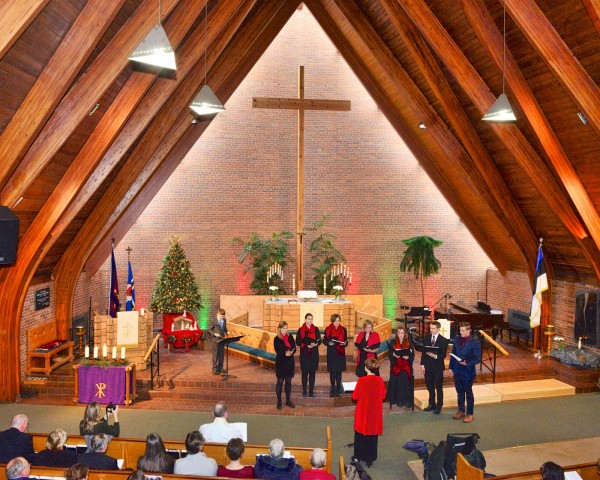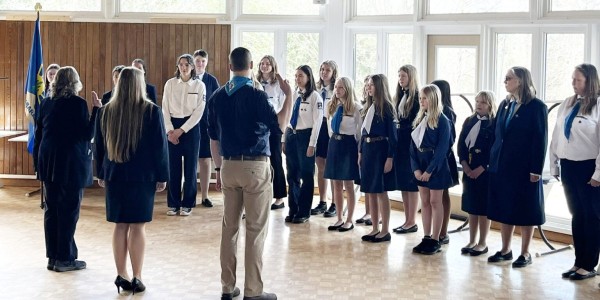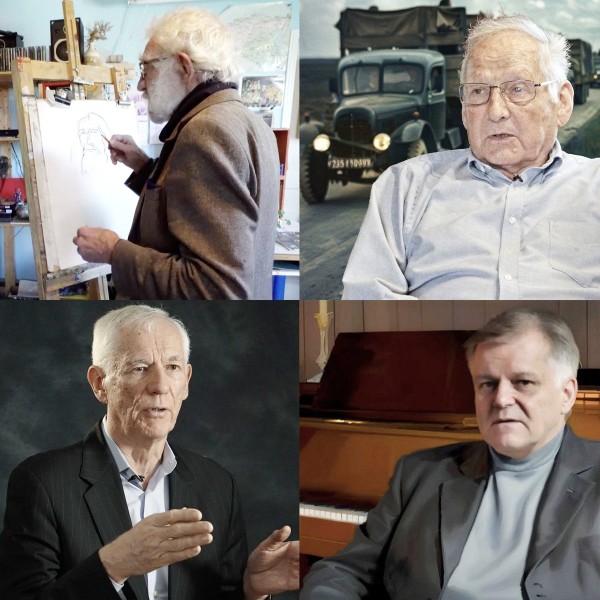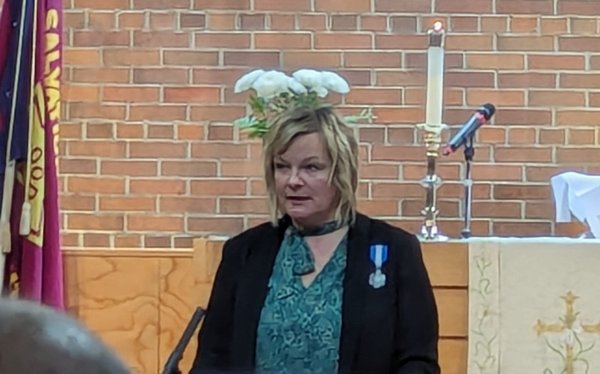A lot of misinformation about our congregation and Council has appeared in Eesti Elu and the Estonian World Review. The Council of St. Peter’s church wishes to clarify its actions and the decisions which have been taken to solve the congregation’s financial problems.
We emphasize that Council has had no discussions nor has it any connection with the International Estonian Centre (Keskus).
The church’s Audit Committee has directed our attention to our deteriorating financial situation for many years and it has suggested some remedies, for example, publishing articles and photos of church activities in Eesti Elu and more direct contact with members in the hope that this might increase awareness of and interest in the church and incentivize financial support. We have tried to decrease expenditures as much as is feasible. The most effective measure was the conversion of the administrative position from full to part-time. Council has tried to implement the suggestions of the Audit Committee. However, the impact has been minimal.
In 2019 the Future Committee, consisting of volunteers from the Advisory Committee, was created at the suggestion of the Audit Committee. Its task was to explore in detail potential solutions to our financial problems in order to ensure the continued existence of our congregation. The Future Committee discussed the following options:
1. Increasing income: In order to have adequate income from donors alone we would need at least 400 additional families pledging the recommended annual donation on an ongoing basis. This is not realistic given the demographics of our congregation and the general secularization of society. Thus, the best alternative to increase income was renting our premises. Over the years various groups have provided rental income. It became apparent that:
• Our building is unsuitable for use as a daycare centre due to the fact that the basement area does not meet provincial standards. There is no natural light and the emergency exit is substandard. The province requires that children have a secure outdoor playground which we lack.
• Concerts and similar events are inadequate sources of revenue as the income they generate is inadequate and unpredictable. As a rule concerts depend on sponsors to cover the cost of paying performers. Ticket sales do not cover this expense and there is usually little money left to pay for rent.
• We were fortunate that the Salvation Army became our tenant in 2016. Without the rental income they provide we would have been in financial crisis long ago. Due to the delays in subway construction they have renewed their rental agreement several times, but since March 2023 their lease is month-to-month, as it appears that they will be moving to their new premises in February 2024 at the latest, that is, in 8 months. The rental income provided by the Salvation Army is close to $100,000 annually. Despite this our annual budget shortfall is roughly $100,000. In other words, our income needs to increase by $200,000 per year to permit us to stay in our present location. Achieving this is unrealistic.
2. Cooperation with or selling to another congregation:
• We have approached St. Andrew’s Estonian Church (Vana Andrese kirik) Council several times to discuss merging our two congregations. When they sold their church building we offered to rent our church to them. They have consistently rejected our offers to work together. In spite of our joining the ELCIC synod (to which St. Andrew’s also belongs) their Council did not wish to have discussions with us.
• We consulted Bishop Pryse about selling our church to another congregation. He was not aware of any congregations wishing to purchase a church. He pointed out that, on the contrary, there are many churches for sale, as most congregations are facing problems identical to ours: aging buildings in need of repair and declining congregations owing to the general secularization of society.
• The Council of St. Ansgar Lutheran Church contacted us. Their church upkeep has also become prohibitively expensive. Our two Councils met on a few occasions. We discussed joining the two congregations, but they found that, as beautiful as our sanctuary is, our church building does not meet their needs. We lack sufficient meeting rooms and those we do have are on different floors of the building and are not adequately soundproof. In addition, parking is insufficient.
• Bishop Pryse facilitated a meeting of the Councils of several Toronto Lutheran congregations whose concerns are similar to ours. None of them showed interest in joining forces or relocating to our church. Rather, they seemed more interested in the possibility of merging with other congregations and moving to a site which would allow construction of a mutually acceptable building which would meet current standards.
• A Unitarian congregation approached us indicating that they might be interested in purchasing our property. They are not a Christian congregation and we would not be prepared to share the same worship space. Therefore, Council decided that it would be inappropriate to sell our church to them. Besides, the purchase price they offered was less than the true value of our property.
• UPRC (United Property Resource Corporation) is an offshoot of the United Church which deals with redesigning and repurposing exisiting churches in order to increase their income. Our church does not meet their requirements: our lot is too small and they do not offer their services to churches with cemeteries or colmbariums such as we have.
3. We met with a representative of the not-for-profit company “Options for Homes” to discuss the possibility of building apartments or townhouses on part of property. It became clear that such a small development would not generate adequate income. In addition the company would have required complete control of the project.
Our building requires costly repairs should we plan to remain in it for the long-term and to offer it for rent for purposes which would cover our actual costs. For example, our pitched copper roof leaks and its estimated repair cost is $1.5 million. In addition the foundation needs to be waterproofed, rotting window frames need to be replaced, the wall insulation needs replacement, as do our heating and ventilation systems, the tower cross needs to be replaced, the memorial walls require fixing, etc. These repairs are beyond our means.
When all the above facts were considered the Future Committee and Council came to the conclusion that the only remaining option was to sell our property. This was a painful realization for all of us, as this beautiful sanctuary has been part of our lives for almost 70 years. But we were forced to face reality and admit that the congregation is more important than the building, and that if we do not sell our property we would lose everything. Should our congregation become insolvent selling would become an emergency and potential purchasers could take advantage of our being in a desperate situation. If, however, we are able to sell now we will be in a position to preserve the congregation and have a secure financial base to carry on for decades.
We subsequently met with several real estate agents. We chose Andrew Zsolt, the president of Royal LePage Terrequity brokerage and with whom we have developed an excellent working relationship. The result of his efforts is that six developers showed interest in purchasing our property. From these we chose the three best. Council requested that they consider development options which would preserve the sanctuary, at least in part. Unfortunately the cost of such a project was deemed too high to be cost-effective. When two other developers were consulted their feedback was the same.
On further discussion it became clear that the existence of the columbarium deems our entire property a cemetery in the legal sense. This precludes a sale to any developer. Council proceeded to put the application to close the columbarium to a vote. This vote passed with the required 2/3 majority last November.
Prior to this meeting the group “Friends of St. Peter’s” wrote articles in Eesti Elu and EWR in which they claimed to have a business plan which would save the church. Council was prepared to support a well thought through business plan with concrete ideas and the “Friends” were invited to present their plan to the congregation. Unfortunately it became apparent that they had a wish list but no real business plan.
The closure of the columbarium and reinterment of the urns to another cemetery is so costly that this will be possible only when a firm purchase agreement is signed. At a Special General Assembly meeting on March 25 the vote to accept a preliminary agreement failed to achieve the required 2/3 majority by 3 votes. The validity of this vote was successfully challenged on procedural grounds. Therefore, Council cannot take any further steps (including resigning) before a revote is held. This will take place on May 31.
The goal of Council is that the members of our congregation and the Toronto Estonian community understand the seriousness of our situation. This is the reason for outlining the most important measures which Council has undertaken in order to serve our congregation and prevent its demise due to insolvency. We remind everyone that St. Peter’s Church belongs to the congregation and only voting members have the right to decide on the question of the sale of our property.
Congregational Council of St. Peter’s Estonian Evangelical Lutheran Church of Toronto



























